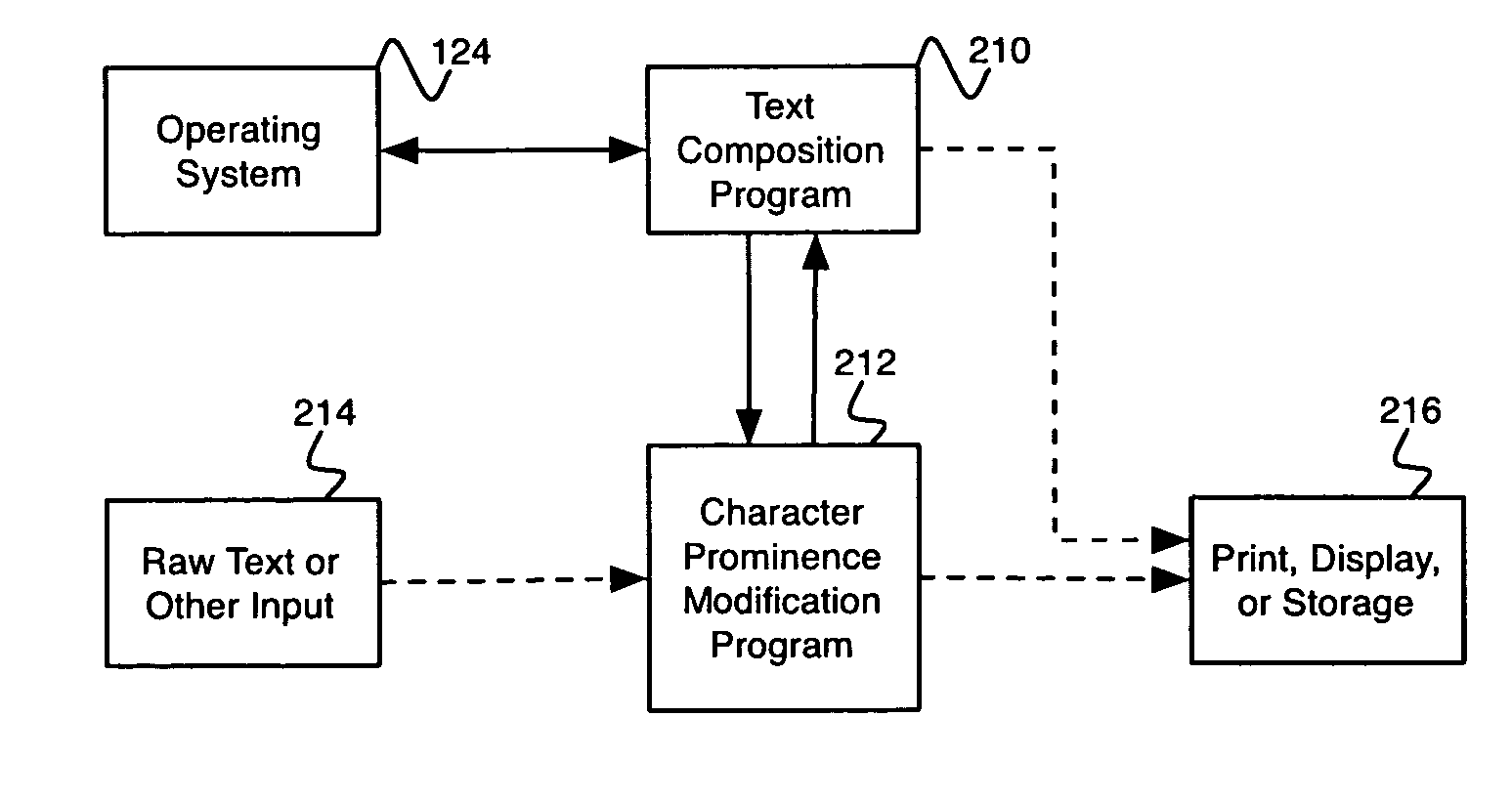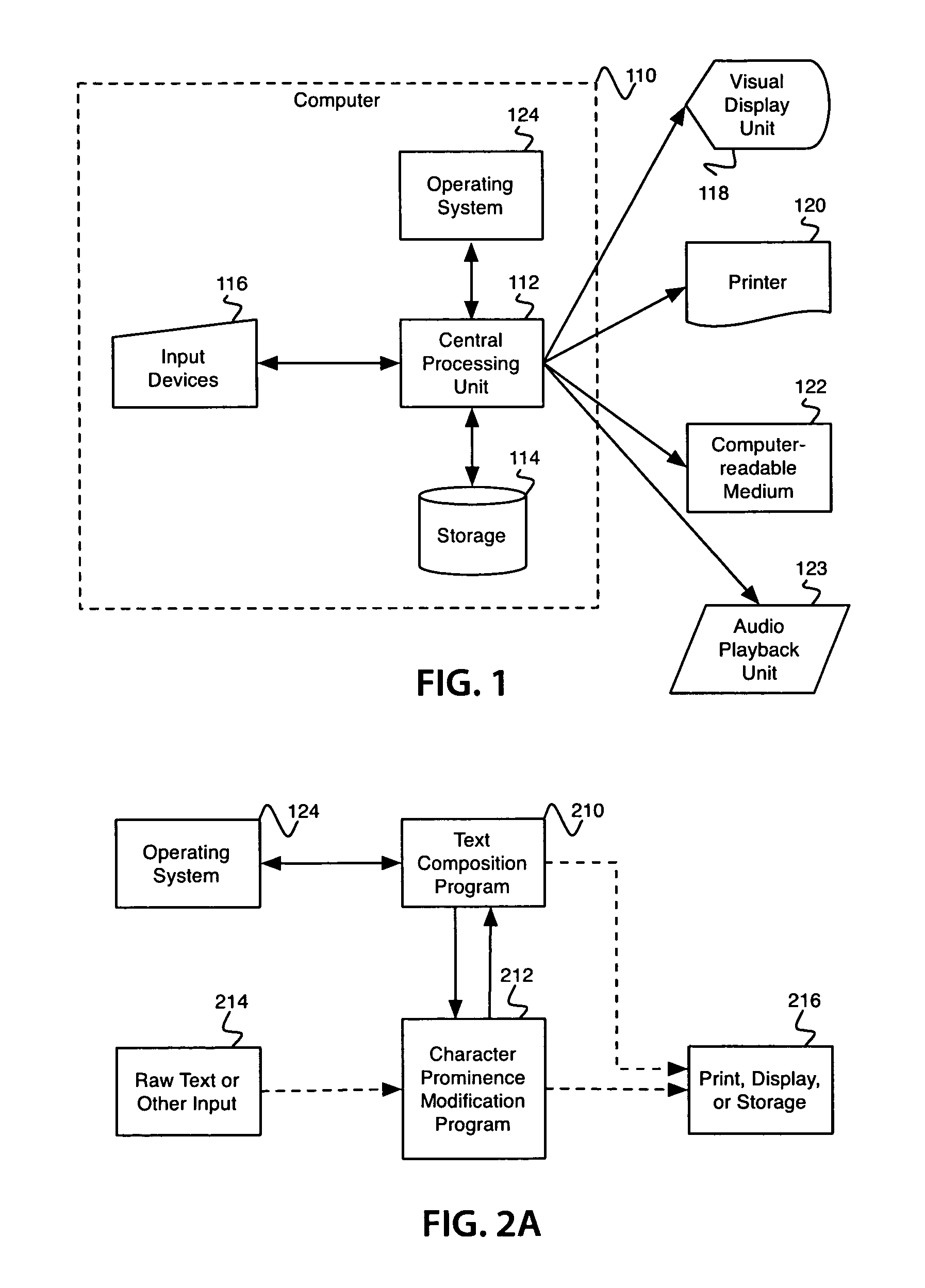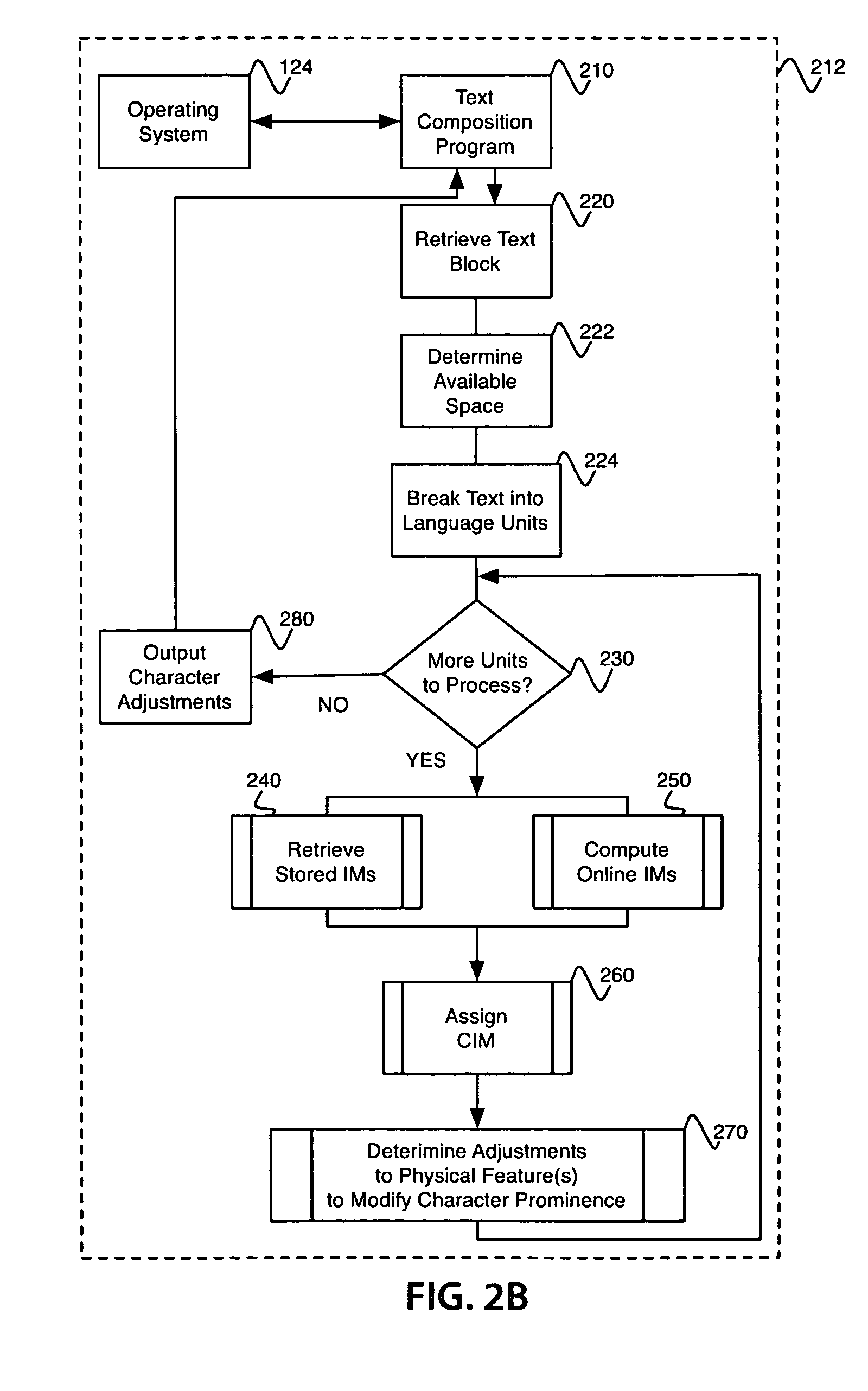System, plug-in, and method for improving text composition by modifying character prominence according to assigned character information measures
a technology of information measures and text composition, applied in the field of textual material composition for printing and display, can solve the problems of high legibility and readability, and achieve the effects of improving legibility or intelligent use, improving readability, and improving the informativeness of characters
- Summary
- Abstract
- Description
- Claims
- Application Information
AI Technical Summary
Benefits of technology
Problems solved by technology
Method used
Image
Examples
case 1
[0108] Adjusting Text Length and Font Size Undetectable.
[0109]Existing composition programs allow text length to be changed by horizontal scaling of all letters, adjusting the between-letter kerning, or adjusting all space sizes uniformly. In existing programs, the scaling is uniformly applied to all features on a line or an entire text. This can lead to noticeable change in the text appearance, either making the characters look too thin overall (especially characters like / l / that are thin already), or too wide overall (especially characters that are wide already such as / w / ). The Nussbaum patent proposes to vary the scaling of letters randomly, to reduce the obviousness of the scaling overall. Our approach is distinct in that it systematically controls the scaling of each character (adjustment of the physical feature) to be unnoticeable in two ways: (1) the scaling of each character is separately controlled according to its CIM. This results in physical adjustment in each characte...
case 2
[0110] Adjust Font Size without Changing Physical Space.
[0111]Another practical use for the invention is to increase the font size while maintaining the physical space needed for the text (e.g., maintaining line length, between line leading, and overall number of text lines). In this embodiment, a larger font for the text can be used while information-based scaling shortens the width of each character individually. The font size may be changed either in the compositing program or prominence modification program. The practical result is a larger, more readable font, with no additional space required and improvement in legibility and readability as shown by text 1016 in FIG. 8D.
case 3
[0112] Information Compression.
[0113]Yet another practical use for the invention is to selectively decrease the visual prominence of characters to an extreme degree, resulting in “informational compression”. This can be used for media presentations where space (or visual inspection time) is limited, as in small electronic displays, or displays of information requiring rapid understanding. The compression can be visually unusual, with some of the letters being very narrow 1018, as in FIG. 11A. In another embodiment the letters with the least informativeness can be progressively replaced with a small symbol, for example, a midpoint (also called small bullet) 1020, which takes up less physical space than the character itself, as in FIG. 11B. In another embodiment, characters below a particular threshold can be progressively deleted 1022 according to the CIM, as in FIG. 11C. The user may select a constraint “information compression” and select the embodiment to select the proper wrapper...
PUM
 Login to View More
Login to View More Abstract
Description
Claims
Application Information
 Login to View More
Login to View More - R&D
- Intellectual Property
- Life Sciences
- Materials
- Tech Scout
- Unparalleled Data Quality
- Higher Quality Content
- 60% Fewer Hallucinations
Browse by: Latest US Patents, China's latest patents, Technical Efficacy Thesaurus, Application Domain, Technology Topic, Popular Technical Reports.
© 2025 PatSnap. All rights reserved.Legal|Privacy policy|Modern Slavery Act Transparency Statement|Sitemap|About US| Contact US: help@patsnap.com



